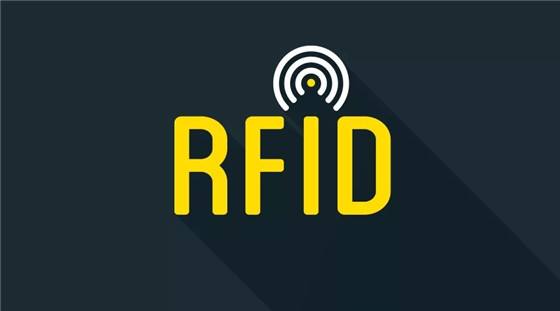
How does RFID technology realize the application of truck frame management?
[ad_1]
Radio frequency identification (RFID) technology uses radio signals to identify a specific target and read and write related data, without the need for the identification system to have mechanical or optical contact with the target. It does not require manual intervention, can be used in various harsh environments, can identify high-speed moving objects, can identify multiple tags at the same time, and the operation is quick and convenient.

Compared with the traditional bar code, magnetic card, IC card identification method, RFID technology has the characteristics of long-distance and non-contact identification, and it is adaptable to the environment. Through reasonable design, it can work in various harsh environments and has excellent Recognition effect. RFID recognition does not require manual intervention, and is suitable for automatic data collection of the system. At the same time, it can recognize high-speed moving objects and can recognize multiple electronic tags at the same time, which is fast and convenient. The application of RFID truck frame management is being realized through the advantages of RFID technology. Now let’s take a look at how RFID truck frame management is implemented.
How RFID works
The RFID reader sends a microwave inquiry signal to the electronic tag through the antenna. When the electronic tag enters the magnetic field, if it receives a special radio frequency signal from the reader, it can transmit the radio frequency signal through the antenna to transmit the energy obtained by the induced current. After outputting the information stored in the chip, the UHF reader reads and decodes the information, and then sends it to the central information system for relevant data processing. The basic characteristic of RFID technology is to use radio technology to realize the identification of stationary or moving objects, to achieve the purpose of determining the identity of the object to be identified and extracting the characteristic information of the object to be identified. At present, it has been widely used in many fields such as automobile production, transportation control management, industrial automation, warehousing and logistics.

RFID truck frame management
The core of RFID truck frame management is to install RFID read-write equipment and RFID antennas on the front of the container truck, install RFID electronic tags on the frame, and use RFID readers to identify the RFID electronic tags to achieve the monitoring of the frame manage. The RFID electronic tag is installed in the frame near the front of the car (as shown in the figure below), and the appropriate installation position is selected according to the structural characteristics of the different frame. At the same time, the frame is made of metal and requires RFID anti-metal electronic tags. In order to ensure that the RFID electronic tag is not damaged during the use, storage and transportation of the frame, the structure of the frame itself is fully utilized to achieve the protection of the electronic tag. For the frame that does not have a protective position, on the premise of taking into account the reading performance, a metal baffle or buffer rubber is installed to form a protective effect on the label.
The RFID electronic label should choose its own 3M double-sided tape, and according to the material and environment of the attachment surface, select the imported double-sided tape with high metal adhesion and high temperature resistance, which can be directly pasted on the frame, easy to use, and reliable in performance . The RFID antenna is installed at the front of the car close to the frame. Because the RFID antenna itself is larger than the RFID electronic tag, it is not easy to find a suitable protective location on the front of the car to install, and in the daily use of the vehicle, collisions will inevitably occur, which will easily cause damage to the equipment installed on the front of the car. damage. In order to avoid such accidental damage as much as possible, the RFID antenna constructed with a thick metal alloy on the back of the frame can greatly improve its endurance. Honglu UHF RFID reader is the core device. The application on container trucks can meet the vehicle-level application specifications, including dustproof, waterproof, vibration-proof adaptability, and can adapt to voltage and current fluctuations. The equipment shell must be firm Durable, anti-corrosion, adapt to outdoor environment requirements such as high and low temperature.
The RFID reader can be installed in the cab, connected to the RFID antenna through the radio frequency cable, and obtain the RFID tag information, thereby realizing the supervision of the frame.
Before the system is used, the initialization of the electronic tag information must be completed. According to the rules or regulations of Sinotrans for frame management, the unique identification code of the frame is written into the RFID electronic tag, and the electronic tag is installed on the corresponding frame , Complete the establishment of initial data information. In the system, the UHF RFID reader is connected to the vehicle terminal through the serial port, and the data read by the Honlu RFID reader device will be uploaded to the vehicle terminal in real time.
After the container vehicle is started, the RFID reader starts to work. When the frame with the RFID electronic tag is connected to the front of the car, the RFID electronic tag enters the recognition range of the UHF reader, and the RFID read-write device will feed back the read data to the on-board terminal. The on-board terminal will The data is sent to the back-end database to complete the “carriage task” of the frame.
After the vehicle frame completes the “carriage task”, the UHF RFID reader can upload the read tag information to the vehicle terminal at intervals according to the system requirements to update the working status of the frame in real time. After the frame completes the task, it is transferred away, and the RFID electronic tag on the frame will leave the reading range of the RFID reader. At this time, the RFID reader cannot detect the presence of the RFID tag, and the on-board terminal cannot receive the reader. The returned tag information, that is, it is judged that the frame has completed the “get off” operation. At the end of a complete work cycle of the frame, the system updates and saves this information in real time to achieve the purpose of real-time supervision of the frame. This requires the RFID reader to have a wide range of power adjustments, so as to ensure that other frame electronic tags will not be misread by adjusting the power without affecting the reading performance.
[ad_2]



